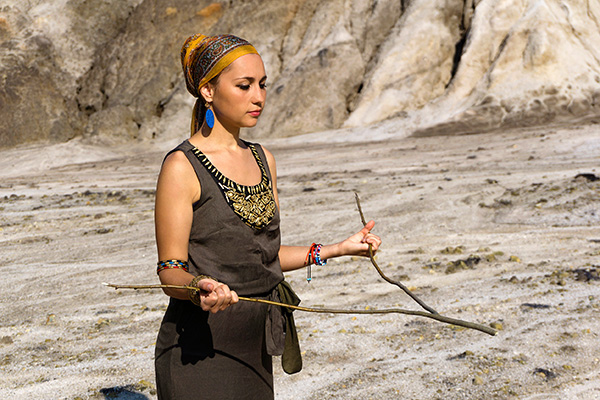spiritual practice
Forgiveness Is Choosing To Take Back Your Power
 Ah, forgiveness! Such a misunderstood concept. For many people, forgiveness, as noble as it may sound, is very difficult, even impossible.
Ah, forgiveness! Such a misunderstood concept. For many people, forgiveness, as noble as it may sound, is very difficult, even impossible.
Sometimes certain wrongs are so grave to us that the offender doesn’t deserve forgiveness in our eyes. There is also a misconception that forgiving someone is tantamount to excusing or justifying their terrible actions. But forgiveness is not about absolving someone of responsibility. Instead, it is a powerful, personal act of release and healing.
When we forgive someone, whether they’ve hurt us emotionally, betrayed our trust, or even caused us physical harm, we’re not letting them off the hook.
We are not condoning their actions or giving them permission to repeat those offenses. Rather, we are choosing to free ourselves from the weight of resentment, pain, and bitterness that binds us to them and their past actions.
Forgiveness is a gift we give ourselves. It allows us to move forward without the burden of past grievances and with an open heart, free of resentment.
By forgiving, we determine for ourselves that the transgressor’s actions and the memory of their misdeeds will no longer hold us hostage or march with us into the future.
While we may not be responsible for what happened to us in the past, we are responsible for how we choose to carry the memory of it into the future. This is the power of forgiveness: it gives us the strength to embrace our present reality with clarity, compassion, and freedom. It also transforms our future, for it is ultimately a karmic choice that will shape our destiny in ways we will only understand much later in this life and beyond.
The Essential Spiritual Practice Of Self-Love
 The first person each of us is meant to love is ourselves. But somewhere along the way, many of us forget or overlook this essential form of love.
The first person each of us is meant to love is ourselves. But somewhere along the way, many of us forget or overlook this essential form of love.
In a world that tends to reward judgment and criticism while valuing perfectionism and material success, many of us become estranged from our own worth and divine essence by falling into these societal patterns of self-judgment and negativity.
To make matters worse, what most people caught in this web of self-criticism do not realize is that unconditional self-love is the very foundation of our soul journey in this lifetime. In fact, it is the essential spiritual practice for a more joyful, deeply meaningful existence and a cornerstone of our spiritual evolution.
We often find ourselves caught up in self-doubt, judgment, and the pursuit of external validation. These patterns hinder our connection to our true essence and limit our ability to radiate divine love and compassion. Embracing unconditional self-love frees us from these limitations and allows us to step into our authentic power.
This journey begins with self-awareness and compassion. By observing our thoughts and feelings without judgment, we can identify the limiting beliefs and negative self-talk that have shaped our perception of ourselves. With gentle understanding, we can release these self-imposed chains and replace them with affirmations of self-worth and acceptance. When we practice self-compassion, we create a safe space for ourselves to heal and grow, embracing our imperfections as part of our unique journey.
The Magic Of Dowsing Stands The Test Of Time
 Dowsing, also known as “divining” or “water witching,” is an ancient practice that uses a tool such as a pendulum or divining rod to locate what is hidden, most commonly underground water, minerals, or lost items. it is also a divination method used to tap into the unseen or mystical to gain spiritual, psychic, or energetic insights.
Dowsing, also known as “divining” or “water witching,” is an ancient practice that uses a tool such as a pendulum or divining rod to locate what is hidden, most commonly underground water, minerals, or lost items. it is also a divination method used to tap into the unseen or mystical to gain spiritual, psychic, or energetic insights.
While skeptics dismiss it as pseudoscience, dowsing has persisted in many cultures for thousands of years, standing the test of time as a mysterious blend of mysticism and physics. I believe its continued presence throughout history speaks to its importance and continued relevance in today’s technological society.
Dowsing has ancient roots dating back thousands of years, although its exact historical beginnings remain uncertain. Archaeological evidence suggests that the practice dates back to ancient Egypt and China, where early civilizations used rudimentary dowsing techniques to locate water and minerals. Cave paintings in North Africa from around 8000 B.C. depict people holding forked sticks, which many experts believe may be dowsing rods.
The ancient Greeks and Romans were also familiar with dowsing, especially for locating underground water sources. They considered the dowsing rod or pendulum a sacred tool capable of tapping into hidden energies. It was believed that certain materials, especially wood or metal, could act as conduits for detecting invisible forces in the earth.
In the Middle Ages, dowsing became more widely practiced in Europe, often by miners searching for metal veins, especially during the mining booms in Germany and England. However, due to its inexplicable, mystical nature, dowsing also increasingly became associated with the occult and witchcraft, leading to its condemnation by the church.
Start Living Your Best Life, Today!
 Many years ago, my work took me to the lavishly decorated penthouse of a client who was a retired physician. I remember being in awe of the magnificent collection of books that lined the walls of his home.
Many years ago, my work took me to the lavishly decorated penthouse of a client who was a retired physician. I remember being in awe of the magnificent collection of books that lined the walls of his home.
“Your book collection is truly amazing,” I remember saying as I entered his beautiful home.
“Well, I worked very hard all my life, and one of my little pleasures outside of work was to buy all the books I felt inspired to read. Unfortunately, because I was always so busy and worked very long hours, I had put off reading most of them. But I constantly reminded myself that one day, when I retire, I would read all these wonderful books,” he said. “Unfortunately, it is too late for that now.”
It was too late…because he had tragically gone blind from an illness.
I will never forget that heartbreaking moment, standing in that lovely room lined with some of the most wonderful works of literature ever published. To this day, it reminds me of the importance of doing the things that bring us joy while we can.
The moral of the story is that although the blind doctor did wonderful things for his patients and the medical profession, he didn’t take much time for his own joy and fulfillment in the present moment.
This is why we need to live our lives in the now! Too often we put off our passions because we think there’s always time. But living fully in the present allows us to appreciate each moment, which fuels joy and fulfillment.
Honor Your Pagan Heritage This Halloween
 Samhain holds special significance for those who practiced paganism in a past life, especially those who were involved in magical practices as seers, soothsayers, druids, and witches.
Samhain holds special significance for those who practiced paganism in a past life, especially those who were involved in magical practices as seers, soothsayers, druids, and witches.
For us, this time of year evokes a deep sense of nostalgia, spiritual reorientation, and a return to ancient wisdom as the veil between worlds thins and we reconnect with our ancestors and the spirit realms.
Samhain is an ancient Celtic festival marking the end of the harvest season and the beginning of winter, traditionally celebrated from October 31 to November 1. It is one of the four great Gaelic seasonal festivals, along with Imbolc (February 1), Beltane (May 1), and Lughnasadh (August 1).
In Celtic tradition, Samhain (pronounced “sow-in”) is a liminal time when the boundary between the physical and spiritual worlds is thinner, allowing the spirits of our deceased loved ones, ancestors, and other spirits to cross over more easily.
In ancient times people would light fires and wear costumes to ward off harmful spirits, while also honoring their ancestors with offerings of food and drink.
Samhain is considered the origin of modern Halloween traditions, although Halloween has evolved and incorporated elements from other cultures to become a mostly secular and commercial holiday. For Neopagans and Wiccans, Samhain remains an important festival for honoring the dead, celebrating the cycle of life, death, and rebirth, and connecting more deeply with the spirit realm.
Unstuck Your Life By Transmuting Your Origin Story
 Do you feel that no matter what you do, your life experiences seem to be stuck on repeat? Are you living the same scenario over and over with a different cast of characters? Or maybe even the same cast, but going through the same problems over and over with no change? If any of this sounds familiar, you may need to revise your origin story.
Do you feel that no matter what you do, your life experiences seem to be stuck on repeat? Are you living the same scenario over and over with a different cast of characters? Or maybe even the same cast, but going through the same problems over and over with no change? If any of this sounds familiar, you may need to revise your origin story.
We all have an origin story. It is a set of deeply held ideas and beliefs that shapes how we see ourselves and our place in the world. It is the story of that we constantly repeat when we talk about ourselves or think about our life experiences. Internally, we use it to define ourselves, and externally, we use it to present ourselves to others.
Our story of origin comes from family, early life experiences, and the choices we made about ourselves as we grew up. While it helps define us, it can also become a prison, limiting our growth and repeating unsatisfying patterns in what we manifest.
In my work as a psychic consultant, I often find in readings that many people are held back by their origin story without even realizing it. When we hold on too tightly to our chosen narrative, we become trapped in cycles that prevent us from evolving into the version of ourselves we truly want and deserve to be.
An origin story differs from a limiting belief in that it is more about the construction of our identity and personality – who we are and how we want to be in the world. It can be more difficult to identify and deconstruct because it is such a strong part of our personal identity. However, it is similar to limiting beliefs in that it is important to explore and become aware of it because it can hold us back and create very unsatisfying life experiences.
Why You Should Be Dream Journaling
 When my grandfather was alive, we had many deep conversations about spirituality and the afterlife. During a few of those conversations, he also promised me that if there was a way for him to contact me from the other side after he passed away, he would do so.
When my grandfather was alive, we had many deep conversations about spirituality and the afterlife. During a few of those conversations, he also promised me that if there was a way for him to contact me from the other side after he passed away, he would do so.
True to his word, he kept his promise. Our connection has remained strong ever since, and he continues to guide me from the other side.
It’s been well over two decades since his death, but I still have visitation dreams and mediumistic experiences in which he communicates with me. I feel incredibly blessed for these encounters, and they have confirmed much of what I’ve always believed about the afterlife and the spirit realm.
Grandpa was one of the few people with whom I could openly discuss my psychic abilities, mediumship, and paranormal experiences growing up. He was incredibly open-minded and spiritually aware for a man of his generation and background.
Not only was he a firm believer in the existence of the soul beyond this life, but he was curious about all things mystical and supernatural. I vividly remember him telling me about an out-of-body experience he had, describing how he had seen his own body from above as he “floated”.
One of the most valuable lessons my grandfather taught me was the spiritual significance of our dreams. He grew up at a time when dreams were losing their mystical significance in society as scientists began to increasingly view the dream state purely through a psychological, biological, and neurological lens.